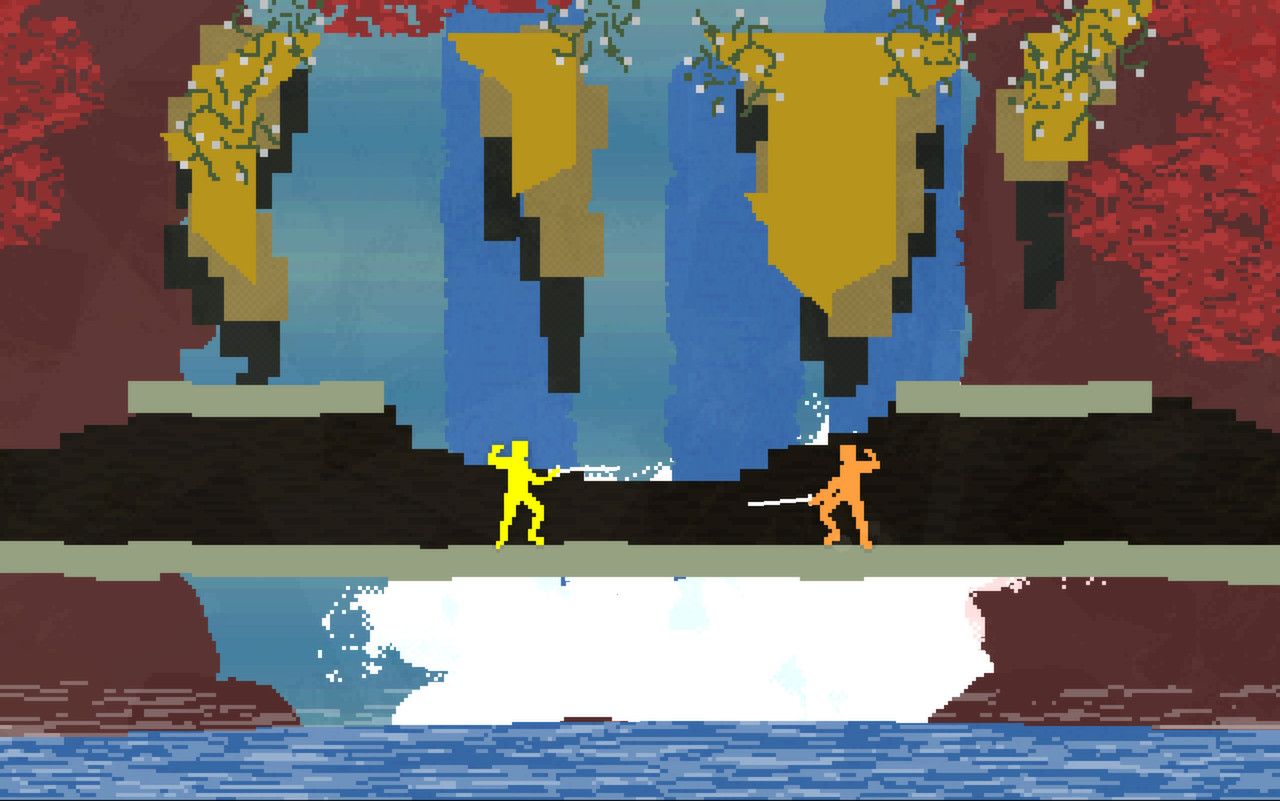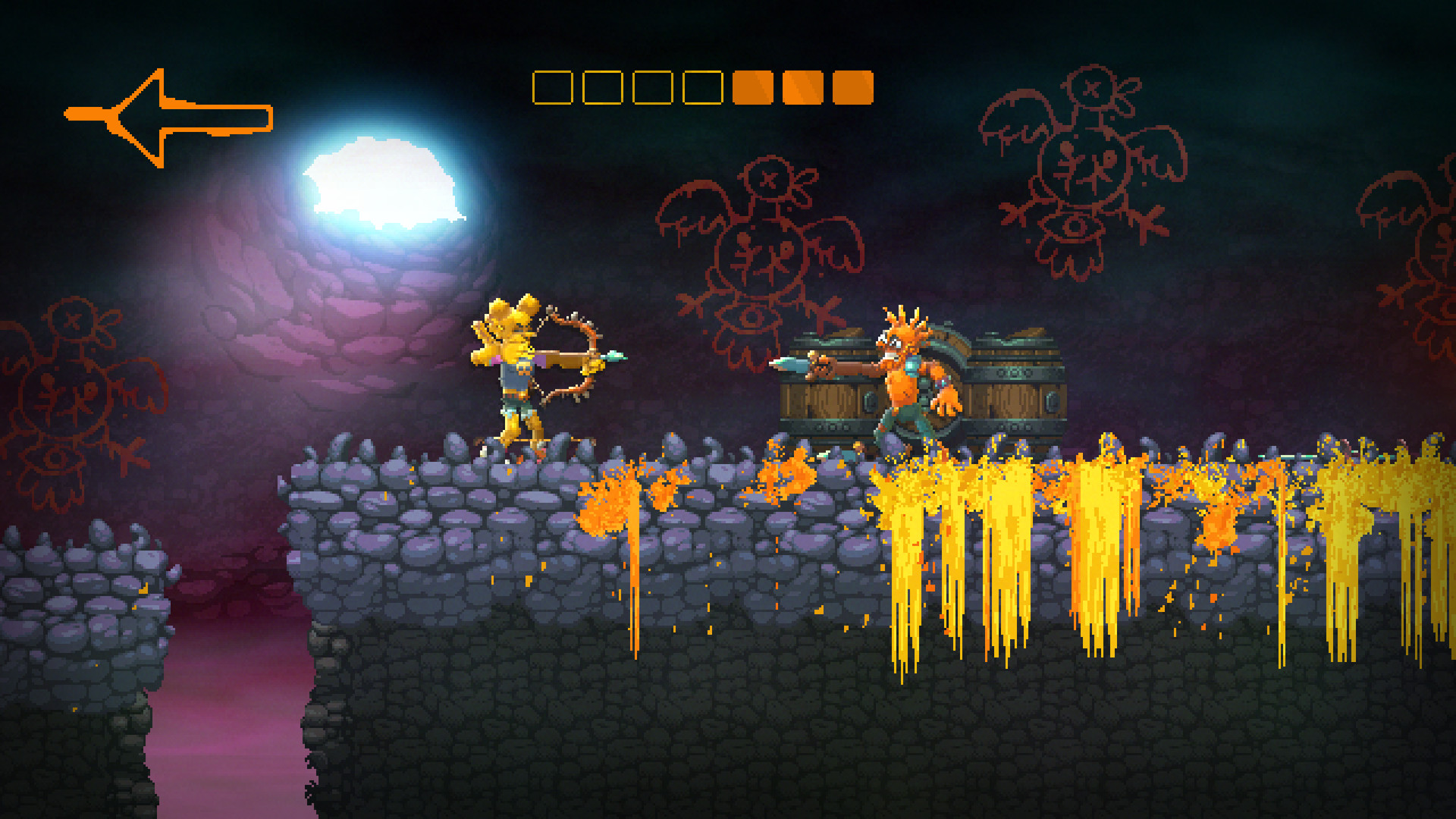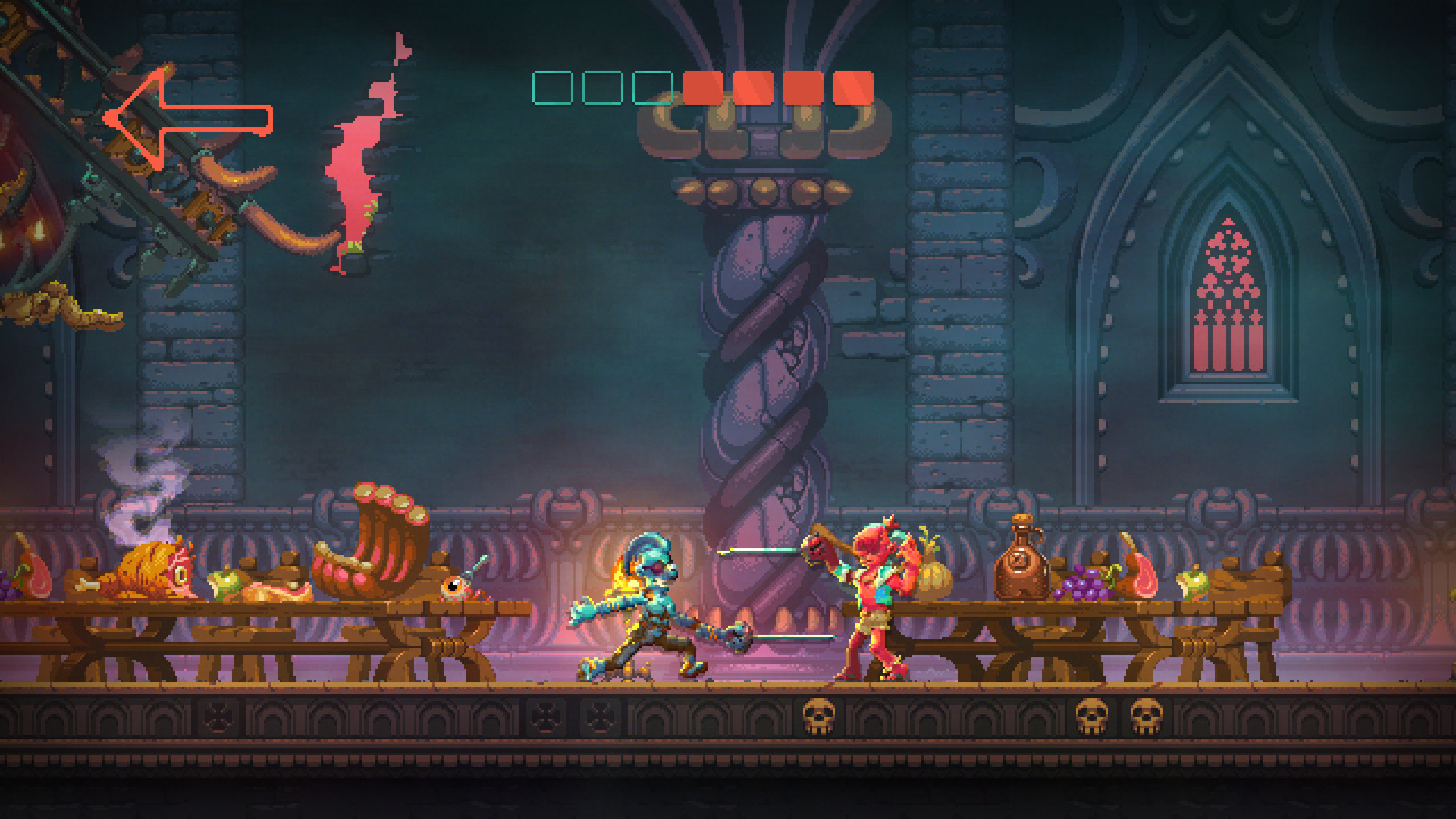In the game Nidhogg, player awareness and anticipation of an opponent’s actions are heavily reliant on the visual cues provided by weapon positioning and movement. Unlike traditional fighting games that may utilize intricate animations or complex hitbox diagrams to signal attacks, Nidhogg employs a more minimalistic approach, emphasizing direct interactions between simple visual elements—specifically, the weapons wielded by the characters.
Key Visual Cues for Anticipating Attacks:
1. Weapon Positioning: One of the most significant indicators of an impending attack is the position of the opponent’s weapon. When an opponent extends or “points” their weapon towards your character, it serves as a clear signal that they are preparing to launch an attack. This straightforward visual cue allows players to quickly assess the threat level and adjust their strategy accordingly.
2. Maintaining Distance and Spacing: The game mechanics place a strong emphasis on “spacing” or “footsies,” where the proximity of players to each other affects their attack strategies. The reach of the weapon becomes crucial as players navigate this space. By observing the length and declination of an opponent’s weapon toward them, players can better gauge when to defend or attack, thereby enhancing their reactive capabilities.
3. Rhythmic Movements: Due to the simplistic graphic style of Nidhogg, animations are not overly detailed, yet they still convey essential timing information. The rhythm of weapon movements and any blade-to-blade interactions function as implicit signals indicating when it may be safe to strike or when a counter may be necessary. Players must attune themselves to these rhythmic patterns to effectively predict an opponent’s actions.
4. Minimalistic Feedback: The lack of complex animations or detailed indicators emphasizes that players must rely on observing their opponent’s weapon movements rather than explicit notifications of attack patterns. As a result, the skill in Nidhogg involves refining one’s ability to watch and interpret these cues—understanding when an opponent is aggressive or defensive at a glance.
Conclusion
In summary, the anticipation of an opponent’s attack in Nidhogg hinges primarily on weapon positioning and movement. By focusing on these crucial visual cues, players can effectively predict and react to attacks, making for a dynamic and engaging gameplay experience that prioritizes reading the space and timing over detailed animations or elaborate mechanics. This minimalist design choice not only enhances the challenge but also deepens the strategy involved in each encounter.






Leave a Reply